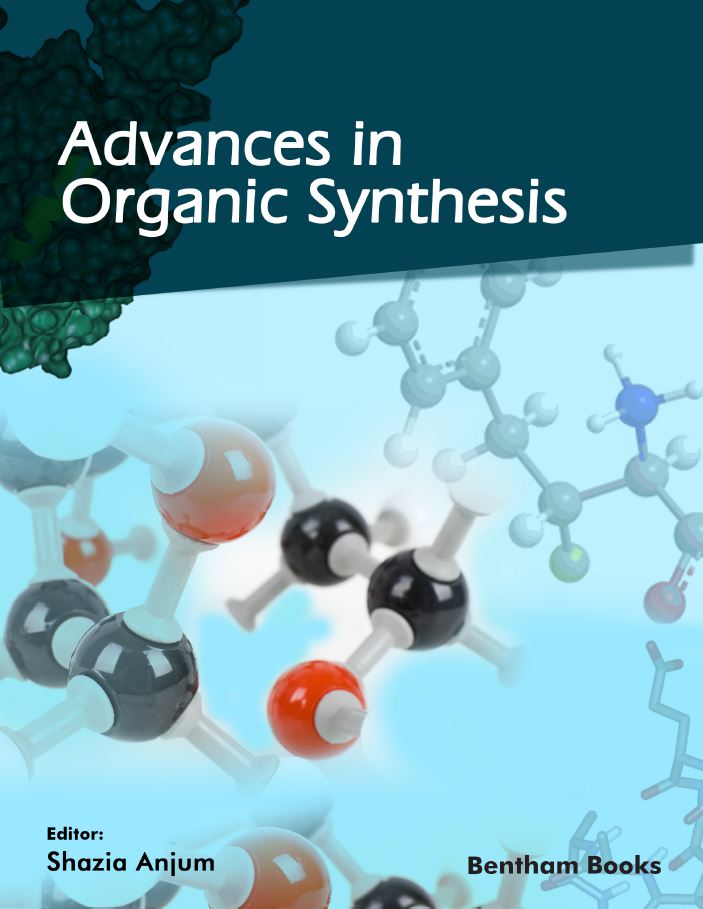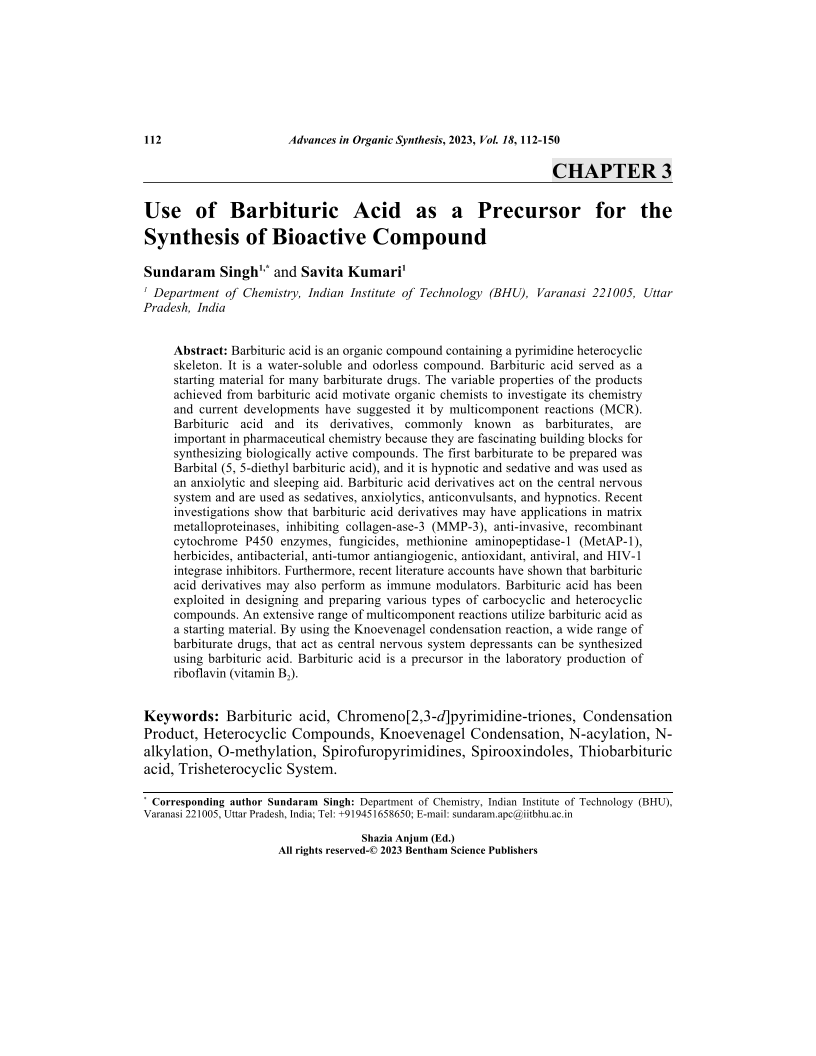Use of Barbituric Acid as a Precursor for the Synthesis of Bioactive Compound

- Authors: Sundaram Singh1, Savita Kumari2
-
View Affiliations Hide AffiliationsAffiliations: 1 Department of Chemistry, Indian Institute of Technology (BHU), Varanasi 221005, Uttar Pradesh, India 2 Department of Chemistry, Indian Institute of Technology (BHU), Varanasi 221005, Uttar Pradesh, India
- Source: Advances in Organic Synthesis: Volume 18 , pp 112-150
- Publication Date: September 2023
- Language: English
Use of Barbituric Acid as a Precursor for the Synthesis of Bioactive Compound, Page 1 of 1
< Previous page | Next page > /docserver/preview/fulltext/9789815040791/chap3-1.gif
Barbituric acid is an organic compound containing a pyrimidine heterocyclic skeleton. It is a water-soluble and odorless compound. Barbituric acid served as a starting material for many barbiturate drugs. The variable properties of the products achieved from barbituric acid motivate organic chemists to investigate its chemistry and current developments have suggested it by multicomponent reactions (MCR). Barbituric acid and its derivatives, commonly known as barbiturates, are important in pharmaceutical chemistry because they are fascinating building blocks for synthesizing biologically active compounds. The first barbiturate to be prepared was Barbital (5, 5-diethyl barbituric acid), and it is hypnotic and sedative and was used as an anxiolytic and sleeping aid. Barbituric acid derivatives act on the central nervous system and are used as sedatives, anxiolytics, anticonvulsants, and hypnotics. Recent investigations show that barbituric acid derivatives may have applications in matrix metalloproteinases, inhibiting collagen-ase-3 (MMP-3), anti-invasive, recombinant cytochrome P450 enzymes, fungicides, methionine aminopeptidase-1 (MetAP-1), herbicides, antibacterial, anti-tumor antiangiogenic, antioxidant, antiviral, and HIV-1 integrase inhibitors. Furthermore, recent literature accounts have shown that barbituric acid derivatives may also perform as immune modulators. Barbituric acid has been exploited in designing and preparing various types of carbocyclic and heterocyclic compounds. An extensive range of multicomponent reactions utilize barbituric acid as a starting material. By using the Knoevenagel condensation reaction, a wide range of barbiturate drugs, that act as central nervous system depressants can be synthesized using barbituric acid. Barbituric acid is a precursor in the laboratory production of riboflavin (vitamin B2 ).
-
From This Site
/content/books/9789815040791.chap3dcterms_subject,pub_keyword-contentType:Journal105

